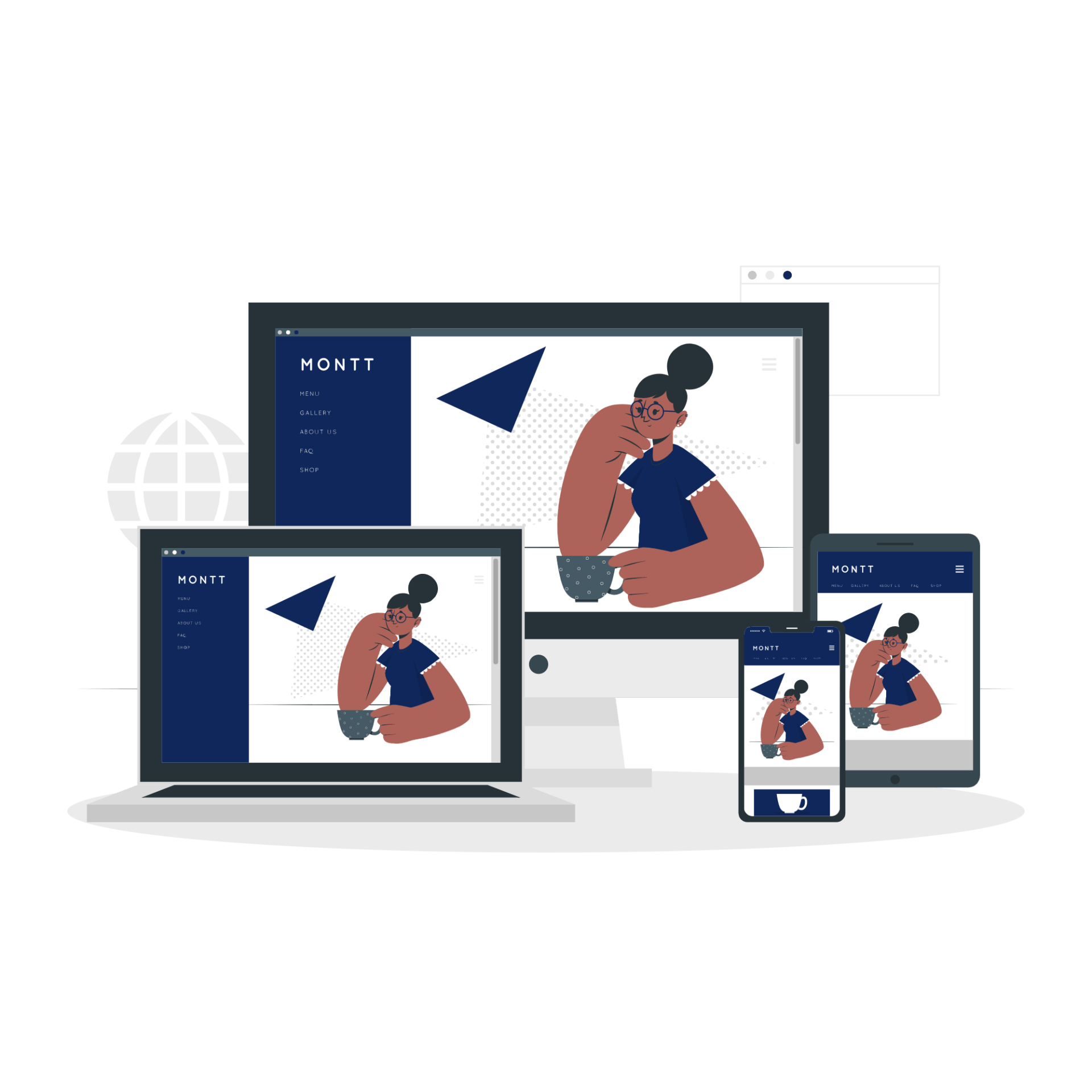Valen from Laably • August 26, 2022
Why do you need a responsive website?

Responsive or adaptable design to any device, it is about offering the user the best browsing experience, regardless of the type of device the user comes from. A responsive website must have a flexible structure and content, this means that elements such as columns and the width of the tables, must be able to adapt to the size of the device while images, videos and texts must be optimazed so that they do not affect factors such as resolution, content quality or loading times.

Some of the advantages of having a responsive website:
- Increase sales💰: You are more likely to get a potential customer to visit your website and stay, if people quickly leave your website, this also increases your bounce rate, which affects your ranking on Google.
- Dicrease costs📉: You do not pay for maintenance on each device, as it is responsive, the entire project is managed in one place.
- Better positioning in search engines🆙: When you have a responsive website, Google algorithms improve your positioning, otherwise they penalize your webpage and you will not appear in the first places.
- Site loading speed🕓: Not only you have a better display of your website, but it also increases the loading speed on each device.
- Satisfied user😊: You improve the image of your brand, gain the trust of the people who visit your website and get a potential client.
It is a fact that people today spend much more time on their smartphones or tablets, this turns into greater consumption through these devices, that's why it is essential that users have the best possible experience when they enter a website through these devices.
Subscribe to the newsletter to receive relevant information related to the hospitality industry and get a 10% discount on any plan during the first 6 months
Contact Us

To explain what hosting is, I want you to think about your hotel, specifically the physical place where your hotel is located, as well as possibly you are paying rent for this physical space, which is necessary for your hotel to exist, hosting is that rent that you must pay so your website visitors can find you, basically if you do not pay the rent for your hotel you cannot operate, just as if you do not have a hosting, your website will not be visible on the Internet. A hosting is the space where the data that builds your website is stored, and that must be available quickly and efficiently every time a visitor wants to access the site, but the hosting not only serves to host your page, it also protects the data it contains, this safeguards the information on your site in case an error occurs. To measure the size of the space you need, think, for example, about the number of rooms your hotel has, the more guests you expect to visit you, the more rooms you need, the same happens with the hosting, the more visitors you receive on your website, the more storage capacity you require, and what is better than having the option to expand the space of your hotel as you expect to receive more guests, in the same way you can choose a type of hosting that expands as your visits to your website grow.

We have talked about the importance of creating databases that allow you to carry out different marketing strategies to capture potential customers. Today I want to talk to you about a strategy that you can apply to your website, and that is the creation of a squeeze page, which is a type of landing page that is used exclusively to capture emails, in order to create a database that allows you to apply inbound marketing strategies to attract potential customers. What you should include in a squeeze page: 1. A call to action or CTA: Have a single button that clearly indicates the action that the user must take to get what they want. Like "I want the coupon" or "I want to subscribe". 2. Write an attractive text: The introductory text must be interesting and concise, it must offer a promise that is attractive enough for users to be willing to deliver their data. 3. Use images or colors that stand out: Use visual elements that stand out from the content of your page, this will make your page visitors stop at your squeeze page. 4. Implement A/B tests: Test your squeeze page to improve your conversions, vary elements to see what your audience likes the most. Example such as a pop-up:

We have been talking about useful information that you can apply to your website for some time now, and several times we have mentioned the use of Call to Action (CTA). But I haven't told what this resource is about yet. So I am going to tell you what it is, how to use it and why it is important that you include it on your website. A CTA can be an image, text, or button that prompts your website visitors to take an action. The action you want users to take can be of any type, such as making a reservation, filling out a form, requesting information, or getting a coupon. You can use them permanently on your website or in a pop-up, placing them at the beginning, in the middle or at the end of the page, depending on when you think it is convenient for the visitor to perform the action, but be careful! It is not about adding a button that says "Click here", it is necessary that you accompany this element with a marketing strategy and that you take into account these fundamental elements that you cannot omit. 1. Use an eye-catching design: CTAs need to be noticed, we need to get users to look towards the call to action. The CTAs should be large enough to stand out and the colors should contrast with the rest of the page. It is recommended to use buttons that are approximately 200px width by 50px high.
